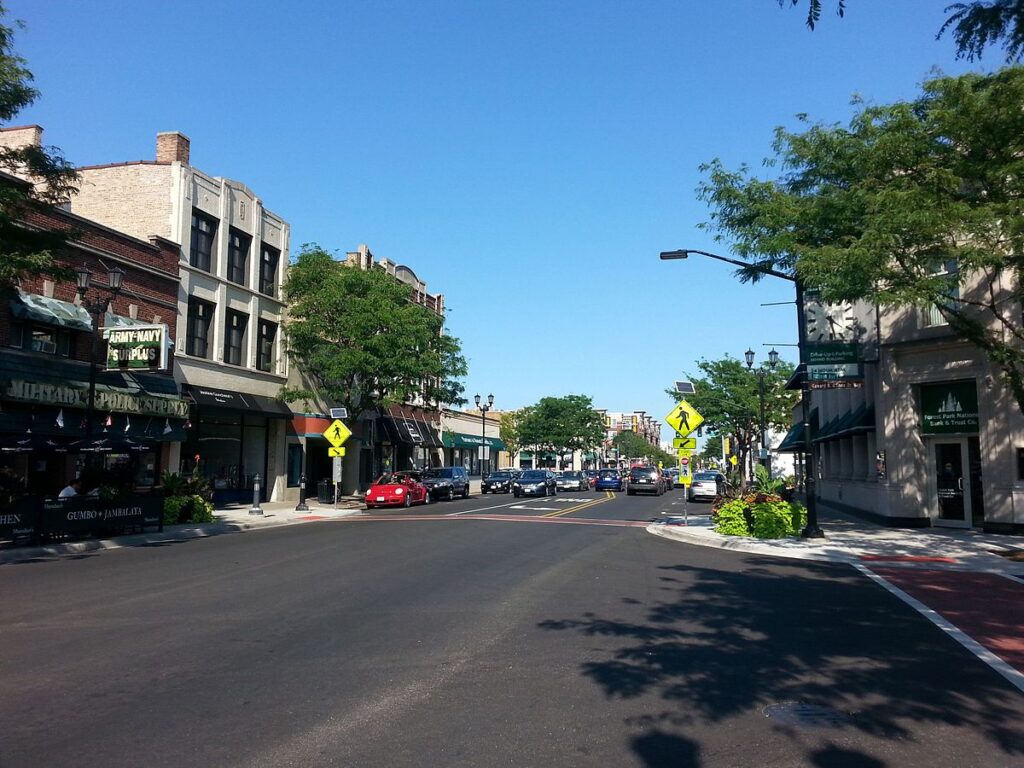
Moving to Forest Park, Illinois: A Comprehensive Relocation Guide
Considering moving to Forest Park, Illinois? This diverse Cook County village offers immediate Chicago access, CTA convenience, and affordable living. With approximately 14,000 residents in 2025, Forest Park combines urban accessibility with village character and Near West suburbs’ transit hub.
Demographic Profile to Consider If Moving to Forest Park:
Forest Park’s 2025 population is approximately 14,000 residents in this Cook County village immediately west of Chicago. The median age is around 38 years, with diverse working families, young professionals, and artists. The population is approximately 51% White, 24% Black or African American, 15% Hispanic, 7% Asian. Forest Park features primarily residential neighborhoods, CTA Blue Line terminus providing direct Chicago access, diverse character, and serves as a bedroom community. The village attracts young professionals, diverse families, and those seeking immediate Chicago access with affordability. Forest Park appeals to transit users, artists, and those prioritizing location over space. The community values diversity, urban accessibility, and village atmosphere. Find trusted local services for moving, living, and working in Forest Park.Forest Park Relocation Directory
Cost of Living to Consider If Moving to Forest Park:
Forest Park offers exceptional affordability for immediate Chicago proximity. Median home values range from $240,000 to $320,000 in 2025, significantly lower than Chicago proper while being adjacent with CTA access. The median household income is approximately $68,000. Rental properties average $1,200 to $1,700 monthly. Illinois’ state income tax is flat 4.95%. Property taxes are significant (Cook County). Overall cost of living is very competitive for the transit access, making Forest Park highly attractive for young professionals, transit commuters, and those seeking Chicago proximity with affordability. The village provides tremendous value given the CTA Blue Line terminus location.
Economy and Job Market:
Forest Park residents typically work in Chicago via easy CTA access. The village’s small size means limited local employment. The CTA Blue Line provides direct Loop access enabling city employment. Many residents work throughout Chicago and the metro area. The broader Chicagoland economy offers vast opportunities. Typical commute times to Chicago via CTA are 20-30 minutes. The village serves primarily as a residential community for Chicago workers. The transit access creates convenience for city employment.
Education:
Forest Park School District 91 serves village students with Roosevelt Middle School and elementary schools. The small district serves the diverse community. Nearby Oak Park-River Forest High School or Chicago schools serve high school students depending on location. The educational infrastructure serves the working-class, diverse population.
Recreation and Lifestyle:
Forest Park offers immediate Chicago access via CTA Blue Line enabling residents to enjoy all city attractions, dining, entertainment, and culture. The village maintains Madison Street commercial corridor with diverse dining and services. Forest Home Cemetery (historic) provides green space. Residents enjoy the urban-suburban blend with easy transit enabling car-free living for some. The lifestyle emphasizes transit use, diversity, Chicago accessibility, and affordable urban-adjacent living. The community values diversity, transit access, and maintaining affordable character. Living in Forest Park means accepting small-village amenities, embracing working-class and diverse character, potential urban challenges, and prioritizing CTA access while enjoying immediate Chicago proximity and exceptional affordability creating ideal transit-oriented living for city workers.
Healthcare and Services:
Forest Park residents access healthcare through Loyola University Medical Center (nearby Maywood), West Suburban Medical Center in Oak Park, and Chicago hospitals via short CTA travel. The regional healthcare infrastructure provides comprehensive medical care.
Transportation:
Forest Park benefits from being the CTA Blue Line terminus with the Forest Park station providing direct train service to Chicago O’Hare Airport and Loop. CTA buses and Pace also serve the village. Interstate 290 (Eisenhower Expressway) runs through the village. Many residents rely on CTA for commuting. The transit access enables car-free living for some residents. Typical commute times to Chicago via CTA are 20-35 minutes.
Conclusion:
Moving to Forest Park in 2025 offers affordable transit-oriented living with CTA Blue Line access, diverse community, and immediate Chicago proximity. The village’s combination of low housing costs, direct CTA service, and city adjacency makes it ideal for young professionals, transit commuters, and diverse residents seeking Near West suburbs’ most accessible option where CTA convenience meets affordability and village character defines urban-adjacent living.

